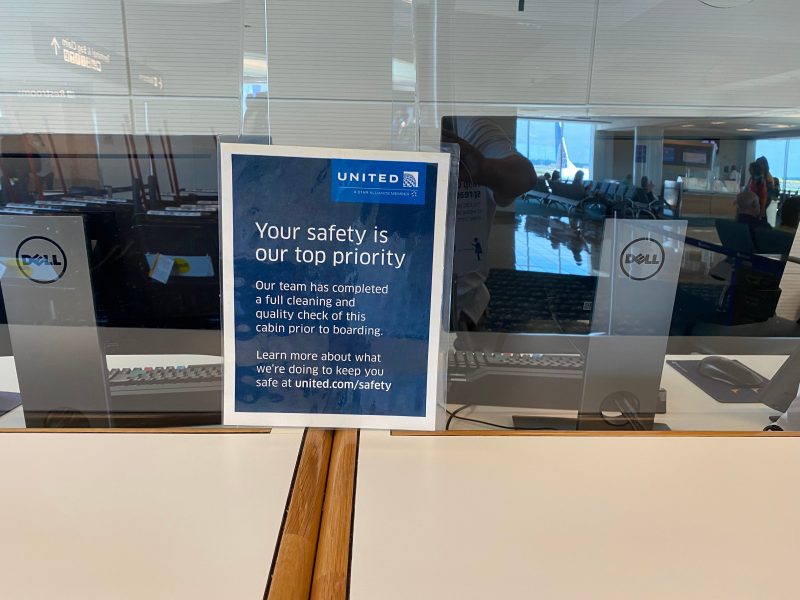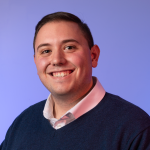- I flew on United Airlines during the pandemic on a journey from Orlando to New York via Washington to see how the airline’s social distancing policies played out in the real world.
- United had opted not to block middle seats and instead, offer free flight changes for passengers flying on crowded flights.
- The airline was inconsistent in its display of social distancing information and the flights lacked any sort of variety as the in-flight service was abandoned.
- Visit Business Insider’s homepage for more stories.
United Airlines is the third largest airline in the US in terms of fleet size and one of the hardest hit because of the pandemic’s impact on its lucrative international routes. Asia, Europe, and Australia, which were effectively closed to Americans throughout the crisis, were among United’s top international destination regions when the pandemic struck.
As part of the road to its recovery, the airline is opting against blocking middle seats and is instead offering free flight changes for passengers when more than 70% of seats are booked. The airline had initially announced that middle and certain aisle seats would be blocked but a now-viral social media post had revealed otherwise.
Seats won’t be blocked from booking and flights will be booked to capacity if demand requires but United won’t assign middle seats and certain aisle seats in paired rows until they are the only ones available. It doesn’t mean that a passenger won’t be assigned a middle seat but it will be a last resort once all other seats are taken.
I flew on United in late June to see how the airline’s policies played out in the real world. Flying from Orlando to New York with a connection in Washington, I saw how the airline handled social distancing on its mainline and regional jets.
Here's what I found.
My journey on United was a simple one-stop itinerary from Orlando to New York via Washington with one leg on a mainline aircraft and the other on a regional jet. I had flown down on Southwest earlier in the day.

United isn't blocking middle seats but they're not letting passengers select them in advance, prioritizing aisle and windows first on mainline aircraft. Here's what it said when I went to go pick my seats.

I was also required to accept this health declaration at check-in.

As the flight was over 70% full, a message appeared informing me that the flight would be crowded and I had the option of changing my flight for free. There were no suitable back-up options so I declined the offer.

The check-in area featured some safety features including plexiglass partitions between passengers and staff at the counter.

There was also some signage asking people to distance in the area.

Self-check-in kiosks were spaced with the middle in a row of three blocked off for use.

There were also designated kiosks for passengers who had pre-purchased a checked bag allowance, allowing them to print a bag tag only by scanning their mobile boarding pass. This was its only functionality but a cool feature, nonetheless.

I was again reminded that my flight would be crowded and another message appeared saying that I had the option of changing my flight for free.

I was given the option to depart from any Orlando area airport and arrive at any New York area airport but there were no flights available for the same day.

The next available itinerary wasn't departing until the next day at 3 p.m., which is usually the case with airlines offering free flight changes as there are fewer flights due to the pandemic.

This was our jet for the 2-hour flight to Washington, an Airbus A319 painted in the airline's new colors.

The gate area similarly featured the partitions separating the passengers and staff.

There was also this tiny sign letting passengers know their aircraft was being cleaned to United's new safety standards.

Other than that, though, there was little signage about United's safety policies or protocols at our gate, though agents made some announcements.

The gate across from ours, however, had some rotating signage like this one. Another display outlined mask requirements on United flights.

Flyers were asked to scan their own boarding pass at the podium equipped with a passenger-facing scanner and hand sanitizer station. We boarded the aircraft back to front and in groups of five rows.

That was, of course, after first class and United elites boarded first.

The jetway had no markers or placards reminding people to social distance, though it didn't appear to be a problem.

Here's a closer look at our Airbus jet taking us to Washington.

All passengers and cabin crew are required to wear face coverings on United flights.

Everybody was given these alcohol pads upon boarding to wipe down seats or sanitize hands.

The seat area was already very clean and I didn't notice any issues but the pad did come in handy.

Very few middle seats were occupied and the ones that were seemed to be because families wanted to sit with each other.

We got lucky the flight wasn't too popular. United wasn't blocking these seats for booking but was limiting non-revenue standby passengers, like airline employees who fly for free, from using them to keep the flight loads down.

All literature had been removed from the seat-back pocket, just like on Southwest.

The air vents also proved to be stronger than the ones on Southwest.

The flight, otherwise, was boring and routine as the in-flight service was suspended and drinks were given on-request.

Flight attendants only came around to collect any trash as the gate agents had advised passengers to purchase food and drinks in the terminal.

The airport experience was completely opposite in Washington compared to Orlando with social distancing reminders lining the jetway, spread throughout the terminal, and on nearly every informational display.

Here's one next to the departures and arrivals board.

The airline even showed a video of its electrostatic spraying procedure, known as fogging.

Signs like this covered the terminal. I didn't see any signs like this in Orlando, which isn't a hub but still a popular destination and COVID-19 hotspot.

I had time in between flights so I headed to the main terminal to see if check-in would be different here than in Orlando. Dulles Airport is one of United's East Coast hubs.

The airport was crippled by this pandemic as it lost nearly all of its international flights on foreign airlines. The check-in area was a ghost town at a time of day when it should be packed for the evening transatlantic departures.

The iconic terminal, however, didn't fail to impress.

There were similar signs at United's check-in area, unlike in Orlando. United is partnering with Clorox and the Cleveland Clinic to ensure that its planes and facilities are cleaned.

Source: United Airlines
Middle kiosks were also blocked at check-in.

And floor placards reminded passengers to social distance.

Back in the terminal, the difference between the signage at the gate for my next flight and the one I had just taken was also drastic. This is just one example, where United outlines the new boarding procedure.

Here's another explaining the new face-covering policy.

There was also a small video that showed the benefits of HEPA filters onboard and United's electrostatic fogging procedure.

The gates also featured plexiglass partitions, like in Orlando, though there was quite a big opening at our gate where the main gate agent workstation was.

The plane taking us back to New York was an Embraer E175 regional jet with seating in a 2-2 configuration. It was over 70% full so gate agents informed passengers they can take the next flight, which was 24 hours later, for free if they wanted.

There were no takers so we boarded, again back to front. The jetway was similarly lined with social distancing reminders.

First class wasn't boarded first, this time, but United's highest elites were.

It was a tiny plane and being over 70% full meant that a lot of people would have a seatmate.

Myself included.

The seats, thankfully, were clean and I found no issues there.

Flight attendants also distributed these sanitary wipes to passengers.

The perks of flying on a regional jet are slim but include a close overhead air vent.

We were just slightly delayed leaving the gate as we waited for passengers coming from a delayed connecting flight. United's ConnectionSaver program in action.

There was absolutely no in-flight service in coach, again, but it was only a 45-minute flight.

Before I knew it, we were back in New York.

Flying on United, put simply, was boring. Whether or not that's a bad thing is up to each passenger.
Unlike some of its competitors, the airline is choosing to abandon in-flight services on shorter flights under two hours and 20 minutes in favor of an on-request system. This meant limited interactions between the passengers and crew and nothing to really mix up the monotony of flying.
United is also not blocking middle seats for booking and allowing its flights to be filled to capacity, part of which I experienced on this journey. Instead, the airline allows passengers to change their flights for free if their original flight is more than 70% full.
While that may sound good in theory, there are often very few alternatives as the airline is flying fewer flights. I've found it to be an empty gesture during my travels.
United is also following a policy of not assigning middle seats until absolutely necessary. It's ultimately meaningless if a flight fills up but for less crowded flights, like the one I took from Orlando to Washington, it did ensure passengers weren't needlessly assigned middle seats before all of the aisle and windows were filled.
My main takeaway from flying on United is that the airline is trying to make it seem as though it's doing a lot for passengers when it isn't doing much at all compared to its competitors. At least its competitor, American Airlines, is honest about its lack of social distancing policies while United makes it seem like it's doing more than it actually is.
Other than that, however, the seats were clean and flights went off without a hitch, which is a luxury in flying during the pandemic.

